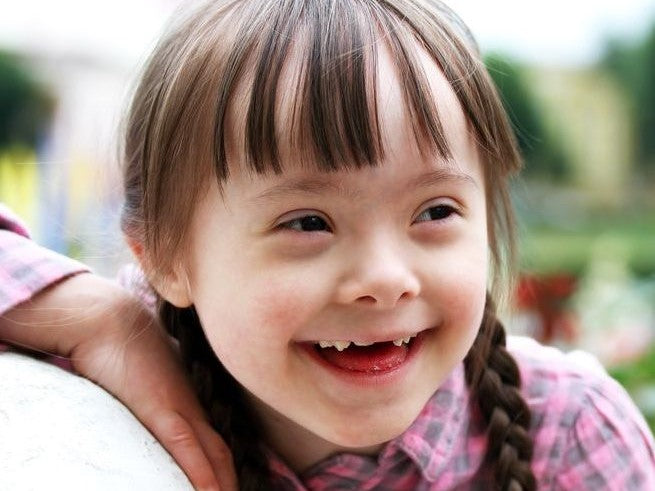
Greetings, my SLP Friend!
Today we’re coveringOral Breathing and Speech Disorders in Children (2013). The information in this article may be helpful to you and your speech-kids.
Many of us look at a child and wonder if his/her mouth breathing, or allergies, or parted-lips, or low-forward tongue, or narrow palate, or longer face, or open bite, or large tonsils, or tongue tie, etc., etc., are impacting the child’s ability to produce articulate speech.
In other words, we ask ourselves the question—knowingly or unknowingly--are any cranio-facial-nasal-oral differences getting in the way of speech development and/or remediation?
In a word, quite possibly. Personally, I call them “obstructers.”
Some individuals with obstructers compensate and have good speech, but some don’t. We need to be at-the-ready and know what to do when they don’t.
To access the article we’re discussing today, here’s the link:Oral Breathing and Speech Disorders in Children.
Oral Breathing and Speech Disorders in Children is written by four Brazilian researchers. Researchers in Brazil, in my opinion, do good research, and typically, write helpful articles for us therapists and other service-oriented professionals.
In this article, like most other Brazilian articles, the writing is straight-forward, practical, and readable. Through the years I’ve noticed that the Brazilian researchers (as well as in other South American, European, and Asian countries) do copious research on the mouth and mouth functions. That makes me happy, and I’ve learned a lot from them about the cranio-facial-nasal-oral system.
Before we begin, I want to interject a (semi-paraphrased) paragraph they include in their Discussion:
“When speech is the aim of a study, it is difficult to encompass all aspects that may affect the outcome: types of breathing, severity and frequency of allergies, degree of hypertrophy of tonsils and/or adenoids, development of eating habits and duration, frequency and intensity of harmful habits, facial profile, dental occlusion, craniofacial growth, strength and mobility of the [oral]-facial muscles, hearing and hearing acuity at testing, auditory processing, and level of stimulation received during development should all be considered….”
They acknowledge the vastness of researching the stomatognathic system. The list includes many (but not all) of the variables, or in their words “the diversity of interfering factors in speech development” that need to be considered when looking at the physical-ness of speech production. Granted, it’s not easy. In fact, the research may not always as “clean” as one would want. But it’s no reason to not try.
One caveat: When you pull up the article, you will be asked if you want it translated from Portuguese to English. Once translated, make note that some of the vocabulary words in the English version will not be quite to our typical interpretation; for example, their use of the word “alteration.” We interpret the word to mean “change” or “modify.” Therefore, when you read “alteration” in the article, I recommend you replace it with the word “difference” (or an equivalent). They discuss “articulation alterations” and I interpret that to mean “articulation differences.”
Objective
To assess speech differences in children who mouth breath, and correlate them with the respiratory type, etiology, gender, and age. “This knowledge can help health professionals to prevent or minimize the consequences of mouth breathing.”[Such as speech delays and disorders.]
Introduction
Nasal breathing improves the quality of the inspired air, protects airways, and promotes oral correct positioning[i.e., promotes lip, tongue, and jaw resting positions].
For their criteria, they considered anyone who had breathed through their mouth[chronically] for a minimum of six months, as a “mouth breather.”
Among the potential consequences of mouth breathing are differences in:
-
Cranio-orofacial growth (in the near future I’ll do a Therapy Matters on this and how it relates to SLPs)
-
Body posture
-
Anterior head posture
-
Tone
-
Flaccid jaw elevator muscles
-
Maxillary atresia (narrowing of the upper dental arch)
-
Lips and tongue mobility (and cheeks) Reduced functional efficiency in chewing, swallowing, and speaking
-
Speech disorders
-
Nutrition
-
Sleep quality
-
School performance
They didn’t list respiratory consequences or low tongue resting posture, but I would throw them into the mix.
However, they did say, and here’s a quote…
“Speech can be altered due to flaccid facial muscles, incorrect positioning of the tongue, or structural problems of the oral cavity caused by malocclusion and/or deficiencies in facial growth and development.” 2,3
Methods
Evaluators: Otorhiolaryngology specialist, allergist, physical therapist, dentist, orthodontist, and speech therapist; evaluations were always done on the same day.
I love the interdisciplinary teamwork. Collaborating with other disciplines about the oral mechanism is a good thing.
Number and age of children: Initially, 439 children who breathed through their mouth; ages 4 to 12 years.
Exclusions: Individuals with genetic syndromes, orofacial malformations, and mental retardation.
What they did: Assessments and Evaluations
The orthodontist assessed occlusal differences.
The dentist assessed dental status, as well as the mucosa and gums.
Patients were classified according to the etiology of each individual’s oral breathing:
-
(A) = patientswithout hypertrophic (enlarged/swollen) adenoids and/or tonsils, butwith allergic symptoms (nasal itching, runny nose, nasal obstruction, sneezing)
-
(IHST) = patients withhypertrophy of adenoids and/or tonsils
-
(H) = patients with obstruction due to hypertrophy[swelling within the mucosa of the nose, just not of adenoids, or tonsils]without allergic symptoms, andnegative IHST
-
(A+H) = patients with obstruction due to hypertrophy, allergic symptoms, and positive IHST[enlargement of the adenoids and/or tonsils, and within the nose and allergy symptoms; triple whammy], or
-
(F) = patients who mouth breathe but have no hypertrophy or allergies or IHST[basically, habit].
It’s not easy to make your way through the above list and understand it. In essence they are the incremental levels and characteristics of nasal obstruction (plus the tonsils), including with (or without) allergic symptoms.
The Speech Therapist evaluated the respiratory mode. Patients were classified as:
-
Oral = the patient had nasal flow restriction and remained with his/her mouth open during the evaluation session, or
-
Oro-nasal = the patient breathed through both the nose with parted lips (I don’t know if this is concurrently, or if the individual did mixed, alternate oral, then nasal breathing.)
The Speech Therapist also performed the “clinical evaluation of tone and mobility of the phono-articulatory organs and stomatognathic functions, among them, speech.” He/she covered all the phonemes in the Portuguese language in the initial, medial and final positions.
The observed differences were classified as:
-
(TI) = Tongue “Interposition”[interdental] prior to the production of /t/, /d/, /n/, and /l/
-
(FL) = Frontal Lisp; the “interposition” of the anterior tongue in the utterance of /s/ and /z/
-
(SO) = Sound Omissions
-
(AD) = Articulatory Disorders, characterized by exchanging one sound for another, systematically or not[substitutions]
-
(LL) = Lateral Lisp resulting in the distortion of the sound “sh” and “zh.”[interesting categorization…what about the lateral /s/ and /z/?]
Results
Once assessed and evaluated, they ended up with 137 children, 5 years old’s and up (they omitted the 4-year old’s; five years old’s were deemed to have a speech disorder). There were 64 females and 73 males. The percentage of kids that breathed through their mouth and had a speech issue fell into the following age groups:
-
5 & 6 = 37.2%
-
7 & 8 = 30.7%
-
9 & 10 = 19%
-
11 & 12 = 13.1%
Type of breathing patterns: 44.5% were oro-nasal; 55.5% were oral only.
The most frequently observed speech disorders were:
-
(TI = Interdental) – 53.3%
-
(AD = Substitutions) – 26.3%
-
(FL = Frontal Lisp /s/) – 21.9%
-
(SO = Omissions) – 18.2%
-
(LL – Lateral Lisp, “sh”) – 8%
“There was no specific association between the type of breathing (oral or oro-nasal) and speech disorders.”
This makes sense; when breathing through the mouth, no matter what type, the tongue is either down or down and forward.
Discussion
Interesting… “It was initially believed that FL (frontal lisp on /s/ and /z/) would be more frequent in cases of tonsil hypertrophy, since by occupying more space in the back of the oral cavity, they would cause projection of the tongue, and thus the FL. The present data did not confirm this assumption, although FL was more frequent in the A+H etiology, it was not for the H etiology.”
I too have always observed and believed that larger tonsils may be a factor (something to always check for) in a person with a frontal lisp. However, there are other factors to consider. Look at not only the size of the tonsils, but the pharyngeal space they are housed in. The question is, is there adequate space availability for the tonsils and the base of the tongue? Also, consider the anterior-posterior length of the oral cavity. A person with Down Syndrome frequently has a reduced anterior-posterior cranio-facial-oral length than their width.
Another interesting point in the article: “The person who mouth breathes is vulnerable to ear infections from both the adenoids and tonsils as well as the swelling of the nasal mucosa in allergic cases, which may lead to malfunction of the Eustachian tube and fluctuating hearing loss. This can interfere with the capacity to identify speech sounds during development, causing delays and differences.”
They suggest that mouth breathing may be an interference factor in speech development. And, although dentition was not covered in this study, they say, “Dental occlusion may [also] have an important association with speech disorders as observed by Farronato et al. 4
Conclusions
“Mouth breathing can affect speech development, socialization, and school performance. Early detection of mouth breathing is essential to prevent and minimize its negative effects on the overall development of children.”
Everyone intuitively knows that mouth breathing is not healthy. Mouth breathing has numerous etiologies, and even more consequences. As an SLP, yes, I’m concerned about those issues, but mostly I’m concerned about the impact on the tongue, i.e., where it rests, and where it functions. How does oral breathing alter the tongue’s functional operating zone, i.e., within what part of the mouth does the tongue interact? Does a low-postured tongue impact lingual tonicity and the tongue’s ability to generate appropriate stabilization and mobilization?
For the next three weeks I’ll share pertinent info about mouth breathing, nose breathing and oral resting postures as it pertains to speech. We’ll cover the rationale and benefits of doing ORP therapy, the intricacies of analysis, and detailed therapy strategies.
Until then, Happy Halloween to you and your kids—be safe out there.
Thank you for all you do!
Char
References
-
Hitos SF, Arakaki R, Sole D, Weckx L. Oral Breathing and Speech Disorders in Children. J. Pediatr (Rio J). 89(4): 361-365, (2013).
-
Lemos CM, Wilhelmsen NS, Mion Ode G, Mello Junior JF. Functional alterations of the stomatognathic system in patients with allergic rhinitis: case-control study. Braz J Otorhiolaryngol. 75:268-274, (2009).
-
Martinelli RL, Fornaro EF, Oliveira CJ, Ferreira LM, Rehder MI. Correlations between speech disorders, mouth breathing, dentition and occlusion. Rev CEFAC. 13:17-26, (2011).
-
Farronato G, Giannini L, Riva R, Galbiati G, Maspero C. European Journal of Pediatric Dentistry, vol. 13, (2012).
Leave a comment (all fields required)
Comments will be approved before showing up.

![#71 Telepractice Tips 'n Info (Part 4) [Is my child working or just playing games?]](http://speechdynamics.com/cdn/shop/articles/Game_Pieces_and_Hand_7_x_3_2048x.jpg?v=1605804364)
